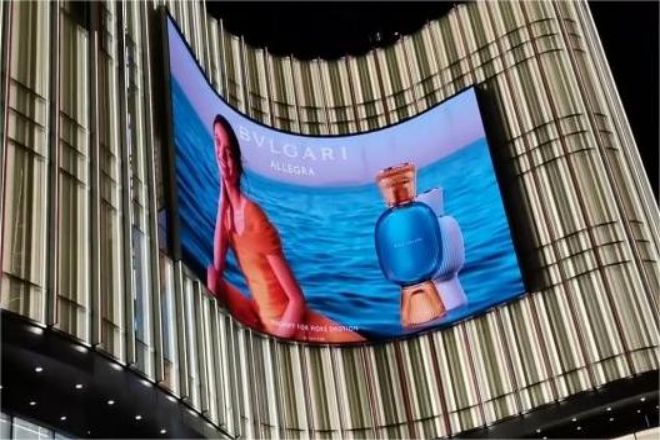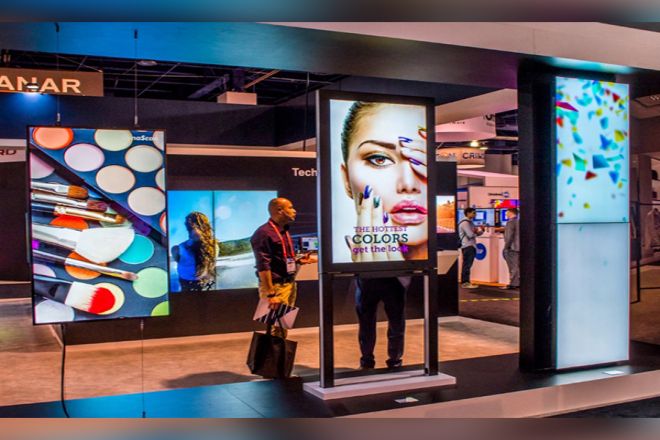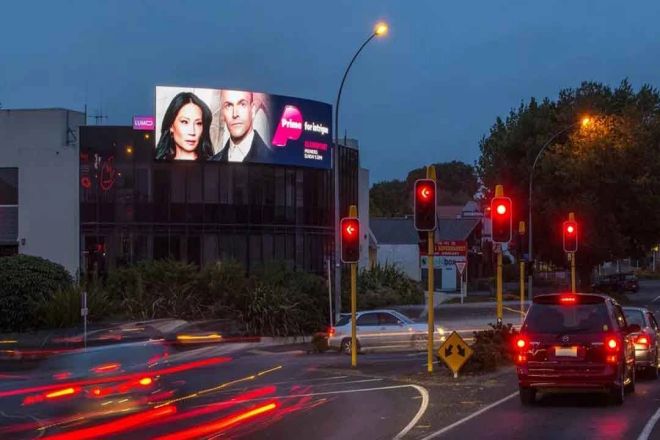Introduction

With the rapid development of science and technology and the acceleration of urbanization, outdoor LED advertising screens have become an indispensable part of the urban landscape. With their high brightness, high definition, and multi-functional characteristics, they provide an efficient platform for commercial advertising, information transmission, and public publicity.
However, with the popularization and application of outdoor LED advertising screens, countries have introduced relevant regulations and standards to ensure their safety, environmental protection, and compliance with the requirements of urban beauty.
1. Overview of import requirements for outdoor LED advertising screens in various countries
1). Certification and standards
- Common international certification standards:
In the import process of outdoor LED advertising screens, common international certification standards include CE (European Safety Certification), FCC (US Federal Communications Commission Certification), RoHS (Restriction of Hazardous Substances Directive), etc. These standards mainly focus on product safety, electromagnetic compatibility, environmental protection, and other aspects.
- Application and requirements:
When importing LED advertising screens, countries usually require products to meet the corresponding international certification standards. For example, products entering the European market must obtain CE certification to ensure that the products meet the basic requirements of European safety, health, environmental protection, etc.
Products entering the US market need to meet the electromagnetic compatibility requirements of the FCC. In addition, the RoHS directive requires that the content of harmful substances in products must be lower than the specified standards to protect the environment and human health.
- Safety and environmental protection requirements:
In addition to meeting international certification standards, countries have also put forward specific requirements for the safety and environmental protection of imported LED advertising screens. For example, products are required to have safety performance, such as fire prevention, lightning protection, and waterproofing; environmentally friendly materials are used in the manufacturing process to reduce waste emissions, etc.
2). Import tariffs and tax rates
- Tariff policies:
Different countries have different import tariff policies for outdoor LED advertising screens. Some countries may adopt lower tax rates to promote international trade and technological exchanges, while others may adopt higher tax rates to protect their own industries and markets.
- Tax rates and tax exemptions:
The tax rates of import tariffs vary depending on factors such as product type, origin, and trade agreements. Some countries may have signed trade agreements with certain countries and impose lower or zero tax rates on LED advertising screens from these countries. In addition, some countries also provide tax exemption policies to encourage the import of products that meet specific conditions.
- Impact on import costs and market competitiveness:
The level of import tariffs directly affects the import cost and market competitiveness of products. High tax rates may increase import costs and reduce the market competitiveness of products, while low tax rates help reduce import costs and improve the market competitiveness of products.
3). Import licenses and quotas
- Import license system:
Some countries have implemented an import license system, requiring importers to obtain corresponding import licenses before importing outdoor LED advertising screens. This system is designed to control the quantity of imports, ensure product quality, and comply with relevant regulatory requirements.
- Quota system:
Some countries may also implement a quota system for outdoor LED advertising screens to limit the number of imported products within a certain period of time. The quota system is usually used in combination with the import license system to more effectively control the scale of imports.
- Restrictions and application process:
The import license and quota system impose certain restrictions on importers. Importers need to understand and comply with relevant regulatory requirements and apply and approve in accordance with the prescribed procedures. These systems may increase the operating costs and time costs of importers, but they also help ensure the quality of imported products and comply with relevant regulatory requirements.
2. Overview of outdoor LED advertising screen installation regulations in various countries

1). Planning and licensing
- Planning process:
Before the installation of outdoor LED advertising screens, countries generally require detailed planning. This usually includes determining the location, size, brightness, and other parameters of the advertising screen, as well as evaluating its impact on the surrounding environment, urban landscape, and traffic flow.
- Permit application:
Before installing an outdoor LED advertising screen, you need to submit a permit application to the relevant departments. These departments may include urban planning, environmental protection, traffic management, etc., which will approve the application according to their respective responsibilities and regulations.
- Approval function:
The urban planning department is concerned about whether the advertising screen meets the overall urban planning and aesthetic requirements; the environmental protection department evaluates its impact on the environment, such as light pollution, noise pollution, etc.; the traffic management department is concerned about its impact on traffic flow and safety.
2). Technical standards and specifications
- Structural safety:
Countries have strict requirements for the structural safety of outdoor LED advertising screens, including their wind resistance, earthquake resistance, and corrosion resistance. The structural design of the advertising screen must comply with local standards and specifications to ensure stable operation under severe weather conditions.
- Electrical safety:
The electrical system of the outdoor LED advertising screen also needs to meet strict safety standards. This includes the specifications of the power cord, the installation location of the electrical equipment, lightning protection, electric shock protection measures, etc.
- Lighting effect:
In addition to safety and structural requirements, the lighting effect of the advertising screen is also an important consideration. Countries may have specific requirements for parameters such as brightness, contrast, and color reproduction to ensure that advertising screens can provide clear and comfortable visual effects at night.
3). Maintenance and supervision
- Regular inspections:
Countries usually require outdoor LED advertising screens to be regularly inspected and maintained. This includes checking whether the structure is intact, whether the electrical system is working properly, and whether the lighting effect is good.
- Repair and replacement:
For problems found during the inspection, timely repair and replacement are required. This ensures that the advertising screen can quickly resume normal operation when problems occur, avoiding adverse effects on public safety and the city’s image.
- Regulatory measures:
Countries may also take a series of regulatory measures to ensure compliance with outdoor LED advertising screens. This includes regular inspections, random inspections, and accepting public complaints. Violations may be subject to fines, removal of advertising screens, and other penalties.
By following these regulations and standards, countries can ensure compliance with the installation and operation of outdoor LED advertising screens while protecting public safety and the city’s image.
3. Specific country case analysis
1). US import requirements and installation regulations
- Import requirements:
LED advertising screens need to meet a series of certification standards when imported into the United States, mainly including FCC (Federal Communications Commission) certification, to ensure that the wireless communication function of the product complies with the US electromagnetic compatibility (EMC) and radio frequency interference regulations.
In addition, LED products must also comply with US safety and energy efficiency standards, such as UL (Underwriters Laboratories) certification and ENERGY STAR energy efficiency label.
Importers need to provide detailed commercial invoices, packing lists, shipping documents, etc., and pay the corresponding tariffs and import value-added tax (VAT). The tariff rate can be found by querying the database of the United States International Trade Commission (USITC) or consulting a customs broker.
- Installation regulations:
Before installing an outdoor LED advertising screen, it is necessary to obtain permission from departments such as urban planning, environmental protection, and traffic management. This usually involves evaluation and approval of the location, size, brightness, and environmental impact of the advertising screen.
The structure and electrical system of the advertising screen need to comply with US safety standards, such as NFPA (National Fire Protection Association) standards.
After installation, the advertising screen needs to be regularly inspected and maintained to ensure its safe and stable operation.
- Regulatory system and enforcement:
The regulatory system in the United States is relatively complete, with detailed regulations and strict enforcement. Violators may face fines, removal of advertising screens, and other penalties.
2). European import requirements and installation regulations
- Import requirements:
LED advertising screens need to obtain the CE (European Safety Certification) mark to enter the European market and prove that the product complies with relevant EU regulations and standards. In addition, they must comply with the RoHS directive to restrict the use of hazardous substances in products.
Importers need to understand and comply with the EU’s tariff policy, including the most-favored-nation tariff rate and possible anti-dumping duties.
- Installation regulations:
European countries may have their regulations on the installation of outdoor LED advertising screens, but generally, they need to comply with the EU’s unified standards.
Departments such as urban planning, environmental protection, and traffic management will also approve and supervise the installation of advertising screens.
- Uniform standards and special requirements:
The EU coordinates the regulatory requirements of member states by formulating unified standards, but member states may still make special requirements based on their circumstances. Therefore, importers need to understand and comply with the dual requirements of the EU and its member states.
3). Import requirements and installation regulations in Asian countries
- China:
Imported LED advertising screens need to comply with relevant Chinese regulations and standards, such as the CCC (China Compulsory Certification) mark.
Before installation, it is necessary to obtain permission from urban planning, environmental protection, and other departments, and comply with China’s building and electrical safety standards.
- Japan:
Imported LED advertising screens need to comply with JIS (Japanese Industrial Standards) or corresponding international certification standards.
Before installation, it is necessary to obtain permission from the local government and comply with Japan’s building, electrical, and environmental regulations.
- South Korea:
Imported LED advertising screens need to comply with the KC (Korea Certification) mark or corresponding international certification standards.
Before installation, it is necessary to obtain permission from urban planning, environmental protection, and other departments, and comply with Korea’s building, electrical, and environmental regulations.
- Regulatory differences and mutual learning:
Asian countries have certain differences in the import and installation regulations of LED advertising screens, but there are also some commonalities. Countries can learn from each other’s experiences and practices to improve their regulatory systems.
4. Challenges and Countermeasures

1). Challenges
- Certification difficulties:
Different countries have different certification requirements for outdoor LED advertising screens, and importers need to spend a lot of time and resources to understand and meet the certification standards of various countries.
For example, the United States requires FCC certification, Europe requires CE marking, and China requires CCC certification. These certification processes are complicated and may involve multiple tests and evaluations.
- Tariff barriers:
Tariff policy is one of the inevitable challenges in the import process. Different countries have different import tariff rates for outdoor LED advertising screens, and there may even be additional taxes, such as anti-dumping duties. These tariffs increase import costs and reduce the market competitiveness of products.
- Long approval cycle:
Before installing outdoor LED advertising screens in various countries, a series of approval processes are required. These processes may involve multiple departments and agencies, with long approval cycles and uncertainties. This not only increases the time and financial costs of importers but may also affect the progress and market opportunities of the project.
- Differences in technical standards and specifications:
Different countries have different technical standards and specifications for outdoor LED advertising screens, which may cause importers to make adjustments during product design, production, and installation, increasing technical difficulty and cost.
2). Countermeasures
- Understand the regulatory requirements of the target market in advance:
Before deciding to enter a market, importers should understand the regulatory requirements of the market in advance, including certification standards, tariff policies, approval processes, etc. This helps importers meet the requirements of the target market during the product design and production stages, reducing the difficulty and cost of subsequent adjustments.
- Establish cooperative relationships with local partners:
Establishing cooperative relationships with local partners can help importers better understand the local market and regulatory environment and provide more professional guidance and support. Partners can assist in completing product certification, handling import procedures, coordinating approval processes, etc., to reduce importers’ risks and costs.
- Seek government support and assistance:
Importers can actively seek government support and assistance, such as applying for preferential tariffs under trade agreements and participating in trade promotion activities organized by the government. These measures help reduce tariff barriers and improve the market competitiveness of products.
- Strengthen technology research and development and innovation capabilities:
In the face of differences in technical standards and specifications in different countries, importers should strengthen technology research and development and innovation capabilities to improve the adaptability and flexibility of products. Through continuous technological innovation and improvement, products can better meet the needs of different markets and customers.
- Establish a sound after-sales service system:
During the product sales and installation process, establishing a sound after-sales service system is crucial to winning customer trust and maintaining market competitiveness. Importers should provide timely and professional technical support and maintenance services to ensure the normal operation of products and customer satisfaction.
Conclusion
In the context of globalization, the import and installation of outdoor LED advertising screens involve not only technical issues but also challenges of laws, regulations, and cultural differences.
Understanding and complying with the import requirements and installation regulations of various countries for outdoor LED advertising screens is crucial to ensuring the smooth progress of commercial activities, protecting consumer rights, and maintaining the city’s image. At the same time, we should also pay attention to international cooperation and exchanges to jointly promote the healthy development of the outdoor LED advertising screen industry.
Finally, if you want to know more about LED display screens, please get in touch with us.
